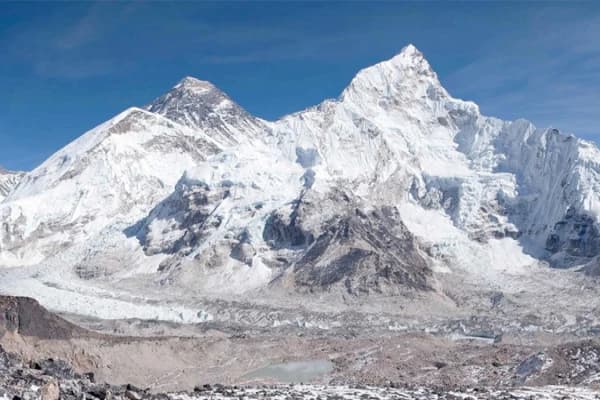If you want a unique and significant trip to the Himalayas, the Everest Base Camp Trek in November is a suitable option. Why is November unique? Because it comes between the busy autumn period and the extreme winter. It is the best of both worlds; there are lovely blue skies and beautiful scenery with few people.
When considering a trek to the Everest Base Camp, it’s important to note that the monthly temperatures can be pretty frigid, especially at night. The possibility of altitude sickness also exists, so trekkers should take precautions. While the climate is mainly dry, the chilly temperatures contribute to the fresh, clean air, making trekking more enjoyable.
November is one of the best months to visit because of the combination of peaceful walks, the rich culture of the Sherpa people, and breathtaking scenery. During this time, you can experience the stunning landscapes of the Everest Region with less congestion compared to the high season. This tranquility, the spectacular views, and unique cultural encounters solidify November as a prime time for those seeking the best trek in Nepal.
Excited to Explore?
If you want to learn about the Everest Base Camp Trek in November, continue reading! This month features magnificent sights and traditions. So, let's explore why this trek is one of a kind!
November Weather on the Everest Base Camp Trek
Clear Skies and Crisp Temperatures
- Ideal Trekking Conditions: This month has mostly clear skies, making it one of the best months for taking lovely pictures of Everest and the other mountains.
- Comfortable Daytime Temperatures: If you are in lower areas, it will likely be around 10°C (50°F) during the day, suitable for walking and sightseeing on the pathways without excess sweating.
- Stunning Sunrises and Sunsets: Often, the beautiful morning and evening sun can be seen, which makes the trekking more interesting.
Day VS. Night Temperatures
- Significant Temperature Drops: Although daytime temperatures are relatively warm, nighttime temperatures are likely to fall sharply, especially with altitude gain.
- Freezing Nights: Near Everest Base Camp altitude, one should expect freezing nighttime temperatures for sure.
- Layering is Key: Proper layering is required due to the extreme cold experienced during the trek, resulting from the temperature difference between day and night.
For those interested in trekking slightly earlier, the EBC trek in October offers different weather patterns that you can review.
Recommended Read:
How Cold is Mount Everest
How to prepare for unpredictable weather
- Pack Smart: Include thermal layers, down jackets, and waterproof clothing in your Everest Base Camp packing list to ensure you are prepared for any climate.
- Be Ready for Sudden Changes: Mountain weather can be unpredictable and change quickly, even in November. Flexible clothing can be beneficial.
- Good Quality Gear: Purchase an appropriate sleeping bag that can withstand very low temperatures. This will help you enjoy sleeping at high altitudes.
What to Expect on the Everest Base Camp Trek in November
Understanding the Route
The Everest Base Camp Trek follows a well-established route through the breathtaking Khumbu region. It begins in the bustling town of Lukla, known for its thrilling airport landing. From Lukla, the trek weaves through charming Sherpa villages, lush forests, and rugged high-altitude passes, offering a unique blend of natural beauty and cultural experiences. The trek typically takes 12-14 days and covers approximately 130 kilometers (80 miles) round trip.
The route of Everest Base Camp Trek includes:
From Lukla to Phakding (2,610m/8,561ft).
Trek from Phakding to Namche Bazaar (3,440m/11,284ft)
Trek from Namche to Tengboche (3,860m/12,661ft)
Trek from Tengboche to Dingboche (4,410m/14,465ft)
Trek from Dingboche to Lobuche (4,910m/16,105ft)
Trek from Lobuche to Gorak Shep (5,140m/16,860ft)
Hike to Kala Patthar (5550m/18,204ft) and descend to Pheriche (4,240m/13,908ft)
Trek from Pheriche to Namche (3,440m/11,284ft)
Trek from Namche to Lukla (2,840m/9,316ft)
Fly from Lukla to Kathmandu (1,400m/4,592ft)
Acclimatization and Altitude Sickness
Acclimatization is crucial when trekking at high altitudes. The Everest Base Camp Trek involves significant elevation gain, so allowing your body to adjust is essential. Take your time and follow the recommended itinerary. If you experience symptoms of altitude sickness, such as headache, nausea, or dizziness, it’s essential to descend to a lower altitude immediately.
Packing Essentials for November Trekking
Packing appropriately for the Everest Base Camp Trek in November is essential for a comfortable and safe experience. Here are some essentials to include in your packing list for Everest Base Camp Trek:
- Clothing: Layered clothing is critical. Include thermal base layers, an insulated jacket, a waterproof jacket, trekking pants, and warm gloves. Don’t forget a hat and a buff to keep warm in cold weather.
- Footwear: Comfortable, waterproof trekking boots with good ankle support are crucial. Also, pack a pair of sandals or camp shoes to relax in the evenings.
- Sleeping Gear: A quality sleeping bag rated for cold temperatures will ensure you stay warm at night.
- Trekking Poles: These can help with stability and reduce strain on your knees during the descent.
- First Aid Kit: Include essential medications, a blister kit, and altitude sickness medication.
- Water Purification: Staying hydrated is essential. Carry water purification tablets or a water filter.
- Camera and Binoculars: Capture the stunning scenery and wildlife.
Cultural Experiences Along the Trail
The Everest region is rich in culture and tradition. As you trek, visit local villages and interact with the Sherpa people. You’ll experience their warm hospitality, delicious food, and unique customs. Consider visiting monasteries and participating in cultural ceremonies, as they offer insights into the local way of life.
Best Time to Trek
November is the best time to trek on the Everest Base Camp. The clear weather provides spectacular views of Everest and other towering peaks. The post-monsoon season means less rainfall, and the trails are dry and safe. Moreover, the cool temperatures reduce the risk of heat exhaustion, which can be a concern during warmer months.
Booking and Permits
November is one of the peak trekking seasons, so booking your trip well in advance is advisable. You will need two main permits: the Sagarmatha National Park Entry Permit, where you must pay NRs- 2000 per person, and the Khumbu Pasang Lhamu Rural Municipality Permit, where you must pay NRs. 2000 per person.
You can obtain these permits at the Nepal Tourism Board in Kamaladi, Kathmandu.
Autumn Landscapes and Wildlife
Golden forests and snow-dusted peaks
- Scenic Beauty: November showcases amazing fall images, with golden forests offsetting the Himalayan snowy peaks, providing fantastic scenery during the hike.
- Autumn Tints: The transformation of leaves makes the trail more enjoyable for the adventurers, creating a warm environment conducive to this activity.
- Interruption-free Views: November offers high chances of clear, dry weather, which means picture-perfect views of mountain ranges and valleys.
- Ideal Time for Photographs: This season, the cloudy and warm light quickly covers the external distractions, making it a perfect time for photography and showcasing the beauty of the landscape.
Unique Wildlife Sightings
- Increased Wildlife Activity: With fewer trekkers on the trails during November, wildlife in the Everest region tends to be less shy, offering a unique opportunity to spot various animals. Trekkers may encounter the elusive Himalayan tahr, vibrant pheasants, and other wildlife that call this stunning landscape home.
- Bird Watching Opportunities: November is an excellent month for bird watching. During migration season, many birds fly over different areas, allowing you to enjoy the wildlife more.
- Less Disturbance: Since there are few trekkers around, the chances of animals being disturbed are also meager, which makes it easy to see them in their natural environment.
- Engaging with Local Guides: Most local guides provide services such as wildlife spotting tours, which enrich your knowledge of the natural plants and animals found in the Everest region and make your trekking experience more enjoyable.
If you’re interested in learning about other scenic adventures, explore our sections on the Nepal Package Tour.
Helicopter Tours to Everest Base Camp in November
Embarking on a helicopter tour to Everest Base Camp in November is an unforgettable experience that allows you to witness the breathtaking beauty of the Himalayas without strenuous trekking. November is ideal for this adventure because the weather is typically straightforward, providing stunning views of snow-capped peaks like Mount Everest, Lhotse, and Nuptse.
During the tour, you'll take off from Kathmandu and enjoy a scenic flight over the stunning landscapes of the Khumbu region. The helicopter will land at Everest Base Camp, where you can take photographs and enjoy the incredible surroundings. You may also visit Kala Patthar, which is famous for its panoramic views of the world's tallest peak.
Helicopter tours provide a quick and comfortable way to reach EBC. This option makes trekking easier and less complicated, as you don't need to hike longer distances. You can soak in the views without the physical demands of trekking.
If you dream of standing at the foot of the world’s tallest mountain but have limited time or want a more accessible way to experience the majesty of Everest, our Short Everest Trek with Helicopter Return package is perfect for you!
Difficulties You Might Face When Doing the Everest Base Camp Trek in November
The Everest Base Camp Trek is an exciting adventure, but tackling it in November comes with challenges. Difficulties in the Everest Base Camp Trek include facing extreme cold, shorter daylight hours, and potential snowfall, which can significantly affect your trekking experience. These conditions may lead to increased physical exertion, making it essential to prepare adequately for the trek while also considering the risks of altitude sickness and limited tea house availability.
Cold Weather
November marks the beginning of winter in Nepal, and temperatures can drop significantly, especially at higher altitudes. Expect freezing temperatures at night, ranging from -5°C to -15°C (23°F to 5°F). Cold weather can lead to discomfort and increase the risk of frostbite if you are not adequately equipped with warm clothing and gear.
Possible Snowfall
There’s a chance of snowfall in November, especially in the higher regions. Snow can make trails slippery and challenging to navigate, and depending on the amount, it might also lead to trail closures.
Altitude Sickness
The trek quickly reaches high altitudes, which can lead to altitude sickness. Symptoms include headaches, nausea, and dizziness. Even if you acclimatize well, the cold and physical strain of trekking in harsh conditions can exacerbate these symptoms. It's vital to ascend slowly and allow for rest days.
Limited Tea House Availability
Some tea houses, particularly those not frequented by tourists during the colder months, might close for the winter. This could make finding accommodation difficult, forcing you to camp or trek longer to reach open lodges.
Physical Challenges
Trekking in colder weather requires more energy as your body works harder to stay warm. You may get tired more quickly than usual, making it crucial to pace yourself and listen to your body.
Hiring Porters and Guides for the Everest Base Camp Trek in November
Hiring a porter and guide can significantly enhance your trekking experience on the Everest Base Camp Trek in November. As temperatures drop and conditions become more challenging, a knowledgeable guide can offer valuable insights into the local culture, stunning landscapes, and safety measures essential for navigating the trek during this time. Meanwhile, a porter can carry your heavy gear, allowing you to trek more comfortably, especially when facing the cold and shorter daylight hours.
Due to the high demand for services during the peak trekking season, it’s crucial to book experienced guides and porters ahead of time, even in November. The cost of hiring them varies, but it’s a worthwhile investment for the added support and local knowledge they bring to your adventure. If you’re considering trekking independently, you might still need assistance.
Read our post on Can You Trek EBC on Your Own to understand the crucial roles guides and porters play, particularly in the unique challenges of trekking in November.
Ready to Trek Everest This November?
Take action now for those yearning to take the Everest Base Camp Trek in November! With cooler weather, fewer crowds, and breathtaking scenery in every direction, November is the best time to wear those geriatric hiking boots and climb the peaks. In addition, fewer people mean more mountain moments to enjoy without the stress of sitting for two hours in a room full of sweaty bodies.
At Real Adventure Nepal, we understand that every trekker is unique. That's why we offer the option to customize your trek! Whether you prefer a shorter route, additional sightseeing, or special accommodations, our team will work with you to create the perfect itinerary that fits your needs.
Explore our Everest Region Trekking Packages
Everest Panorama Trek - 9 Days
Everest Base Camp via Cho La Pass & Gokyo Lakes Trek- 19 Days
Everest View Luxury Lodge Trek - 5 Days
FAQs
What is the weather like on the Everest Base Camp trek in November?
November is also the most favorable for Everest base camp trekking. There will be clear skies and a cool, dry climate during the day, with approximate daytime temperatures of 10 degrees Celsius in lower altitudes. The day is hard; nights are always cold, especially with upward movement, and most times, the temperature drops below freezing point; hence, prepare well!
Is it safe to trek to Everest Base Camp in November?
Yes, November is regarded as a safe month for trekking because the weather is stable and visibility is clear. However, expect cold for the better part of the night, and ensure all your equipment is in order. Also, ensure that you prepare for the Everest base camp altitude and take necessary measures towards acclimatization.
Do I need special travel insurance for trekking in November?
Yes, it is compulsory to have travel insurance that covers high-altitude trekking for the September Everest base camp trek travel insurance. Also, make sure that the policy you choose extends to cover medical emergencies, altitude sickness, and even helicopter evacuation if necessary.
Will I experience altitude sickness during the trek?
This is a high-altitude trek, and for that reason, altitude sickness may strike on any trek. In essence, the most important thing one should do is acclimatize well, drink enough water, and not hurry to climb up. Listen to your body well, and in case of any signs of altitude sickness, ensure you go down without any delays.
What should I pack for the Everest Base Camp trek in November?
Your November Everest Base Camp packing list should include warm layers, an insulated jacket, a quality sleeping bag, thermal base layers, and a waterproof jacket. You should also bring packs, a head torch, and good walking boots suitable for unstable ground.



-(9).webp&w=3840&q=75&dpl=dpl_CtNAyRzUAwPdWKDCFxYk5p2VryPh)
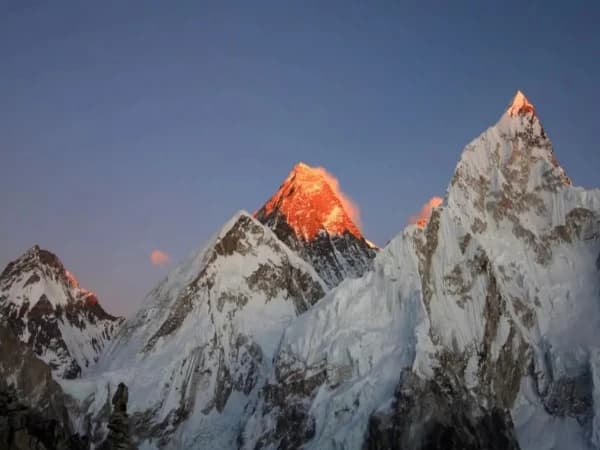
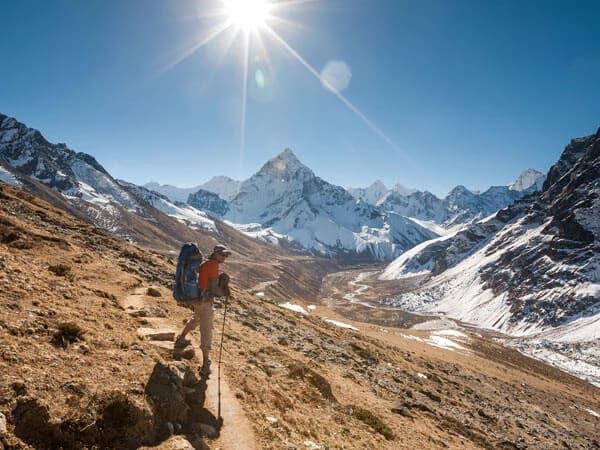
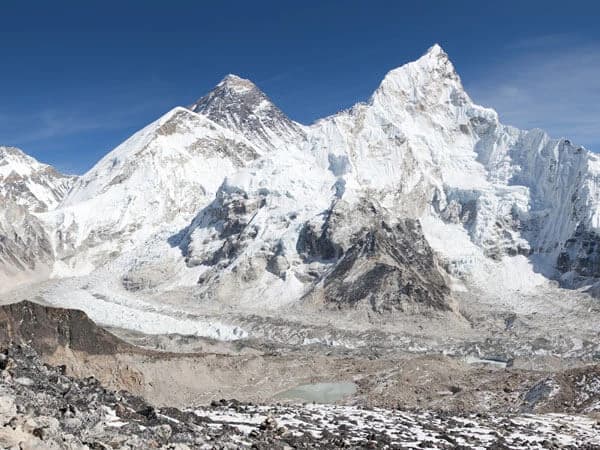
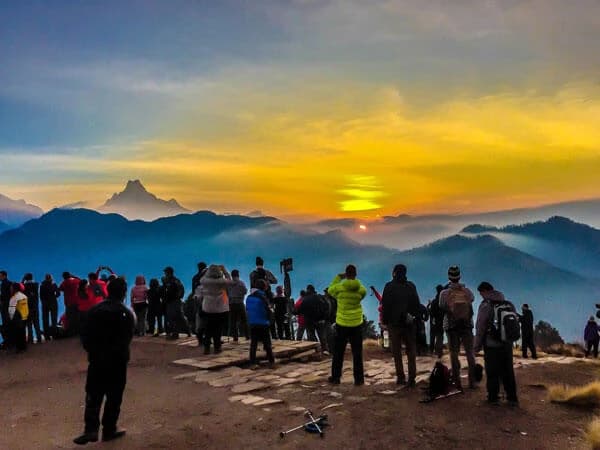
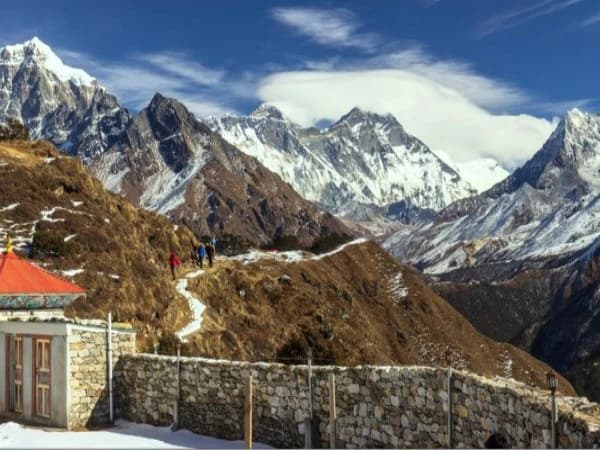
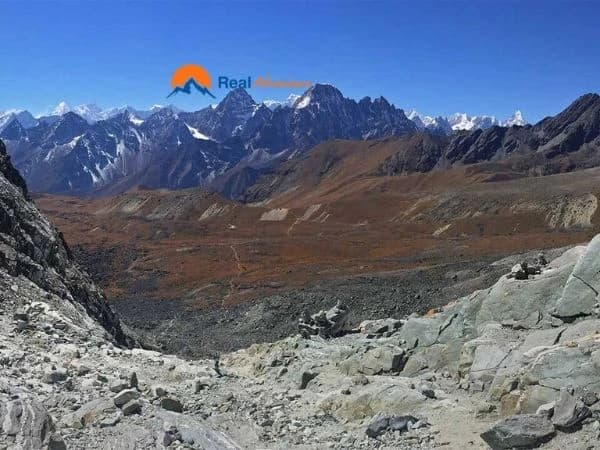
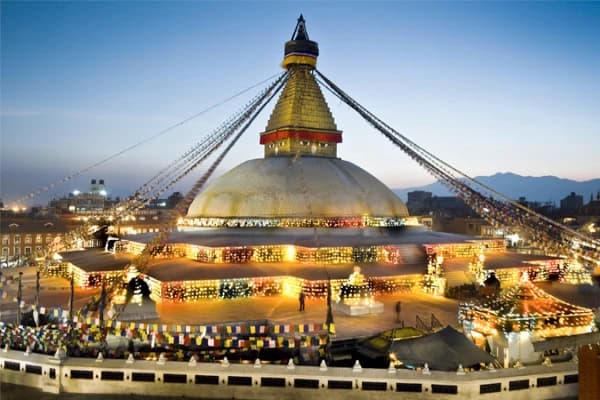
-(5).webp&w=1200&q=75&dpl=dpl_CtNAyRzUAwPdWKDCFxYk5p2VryPh)
